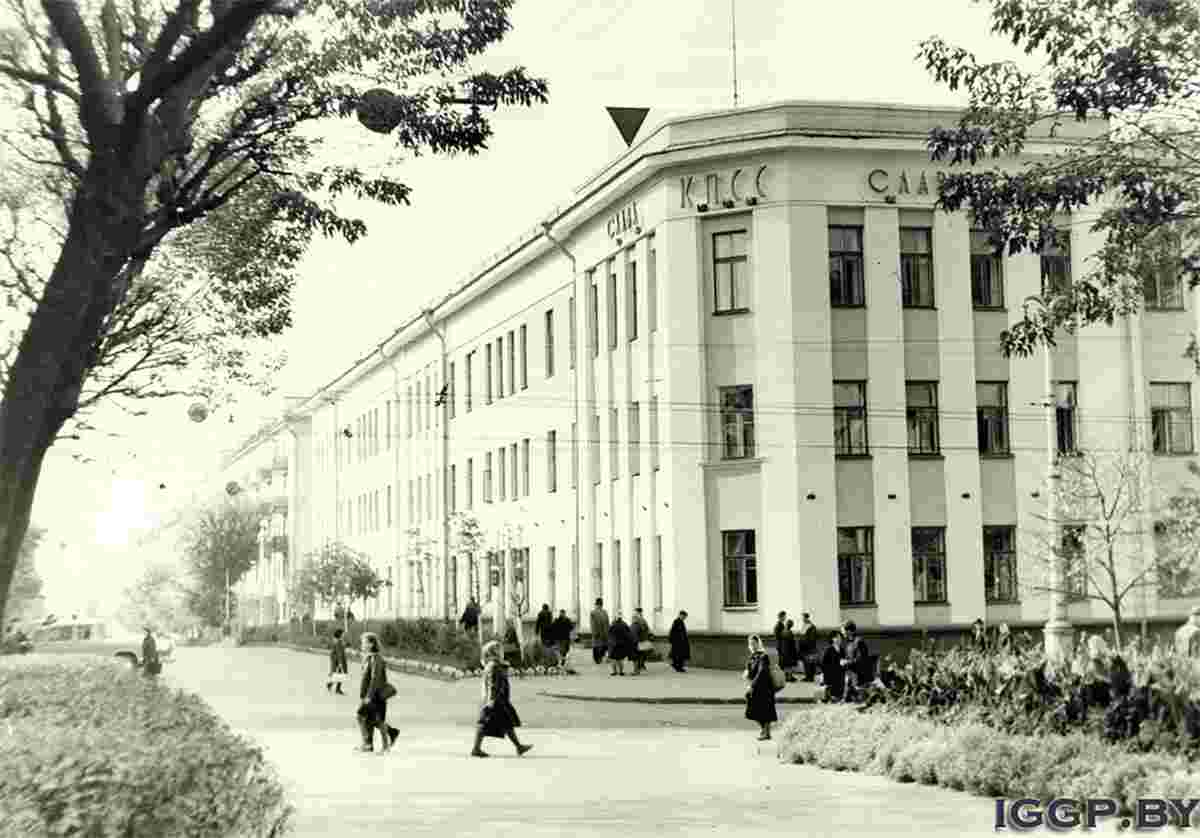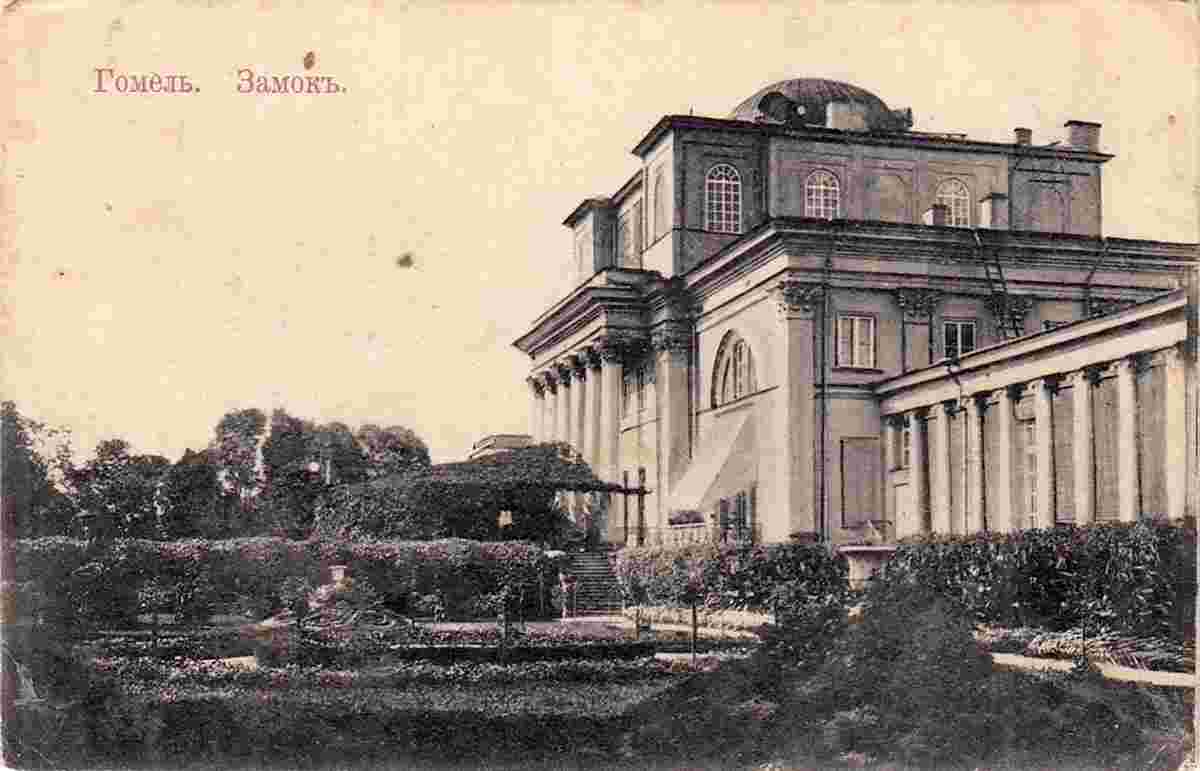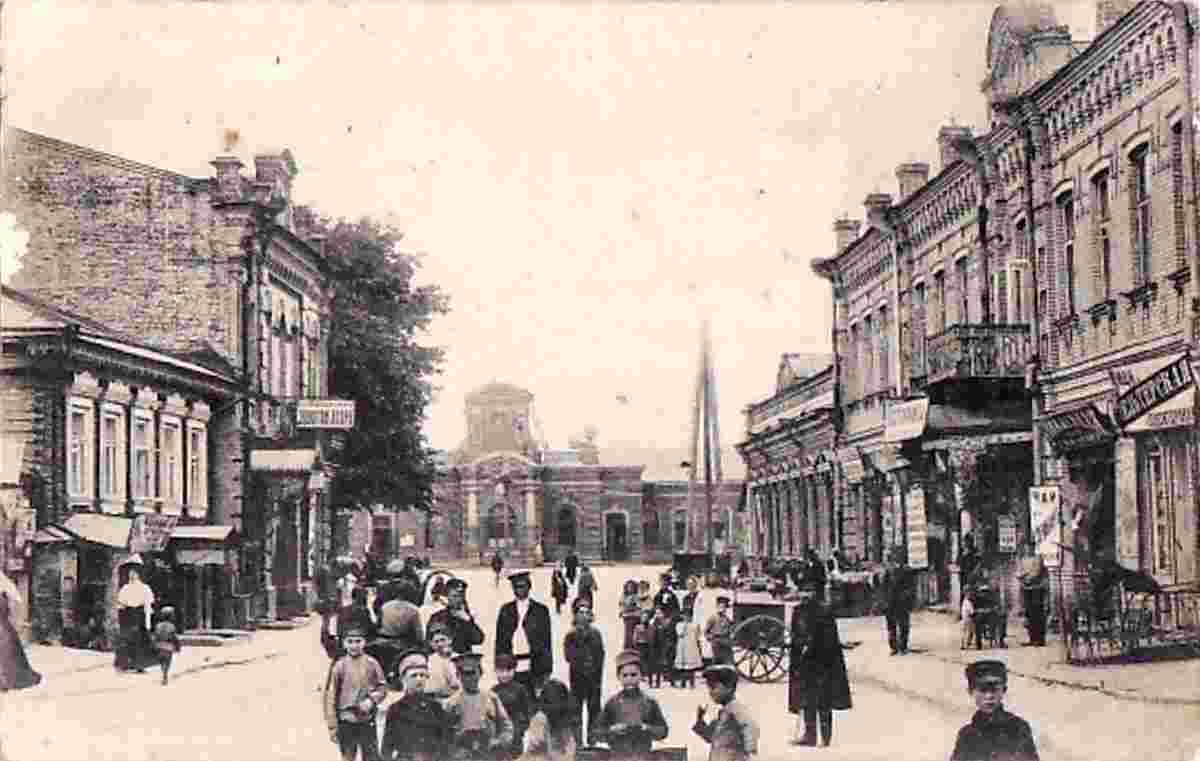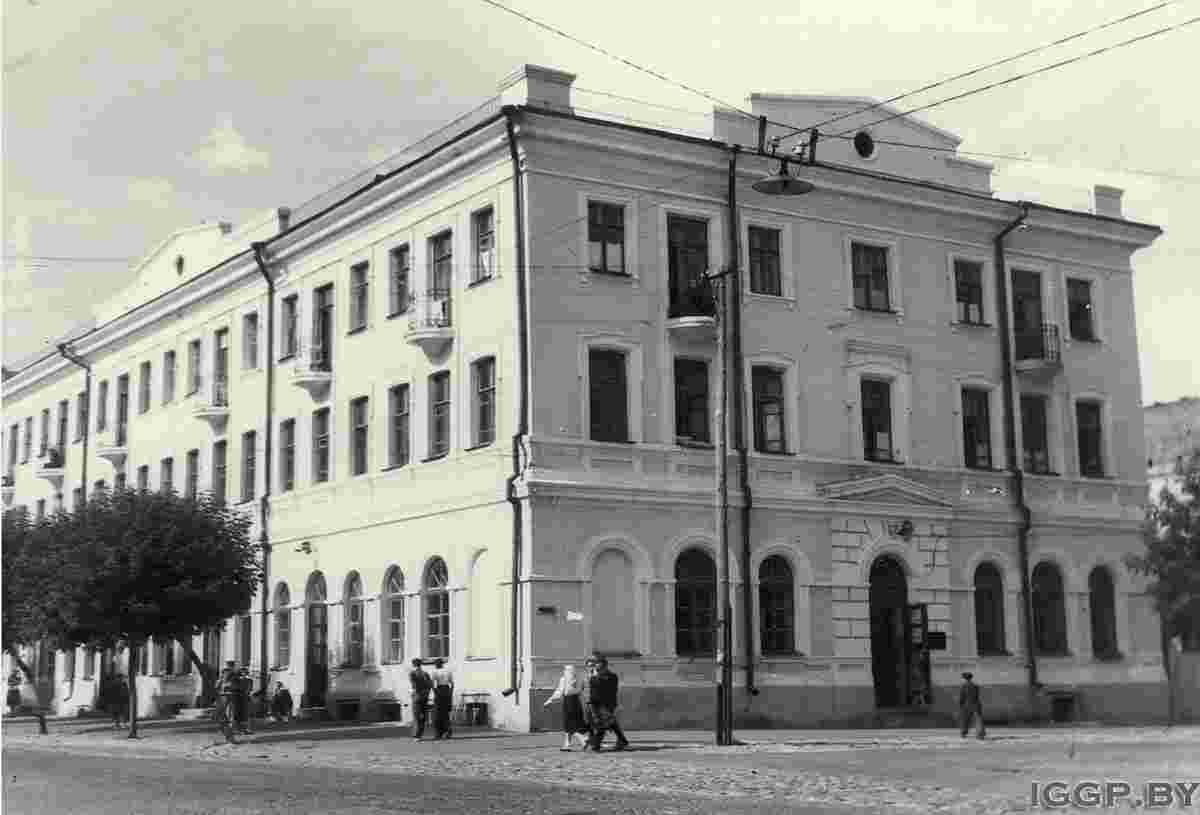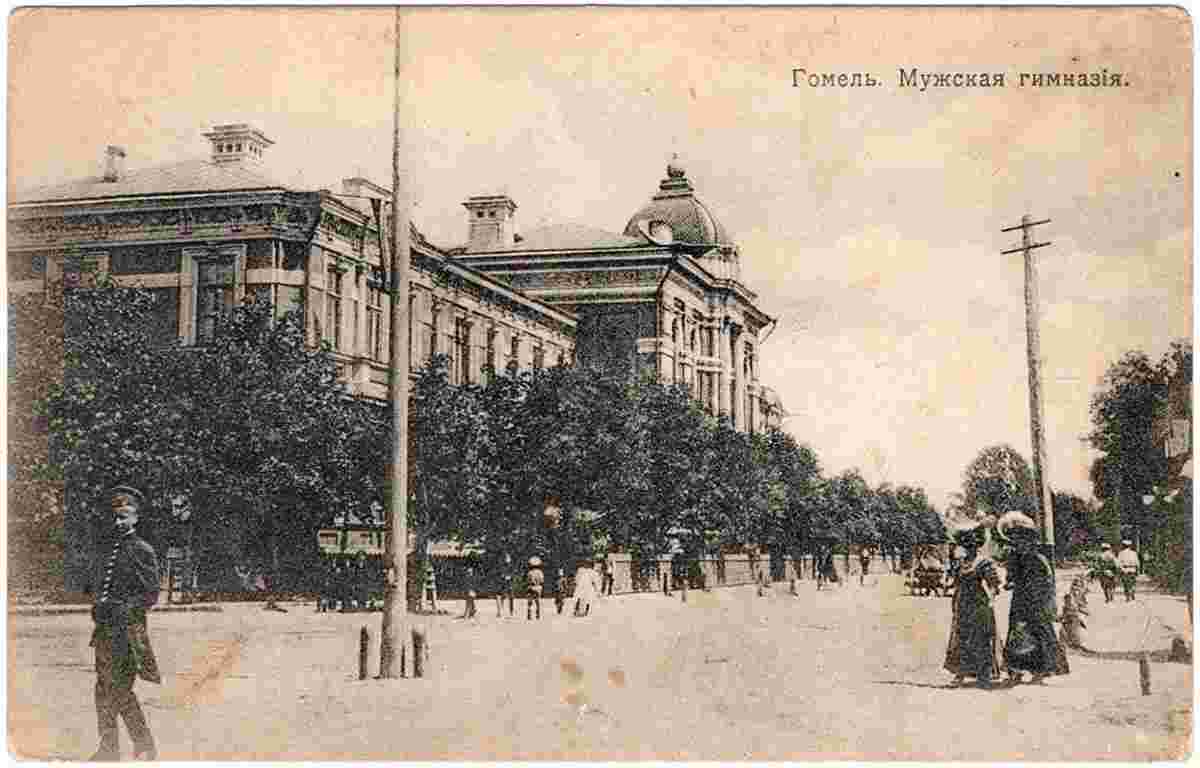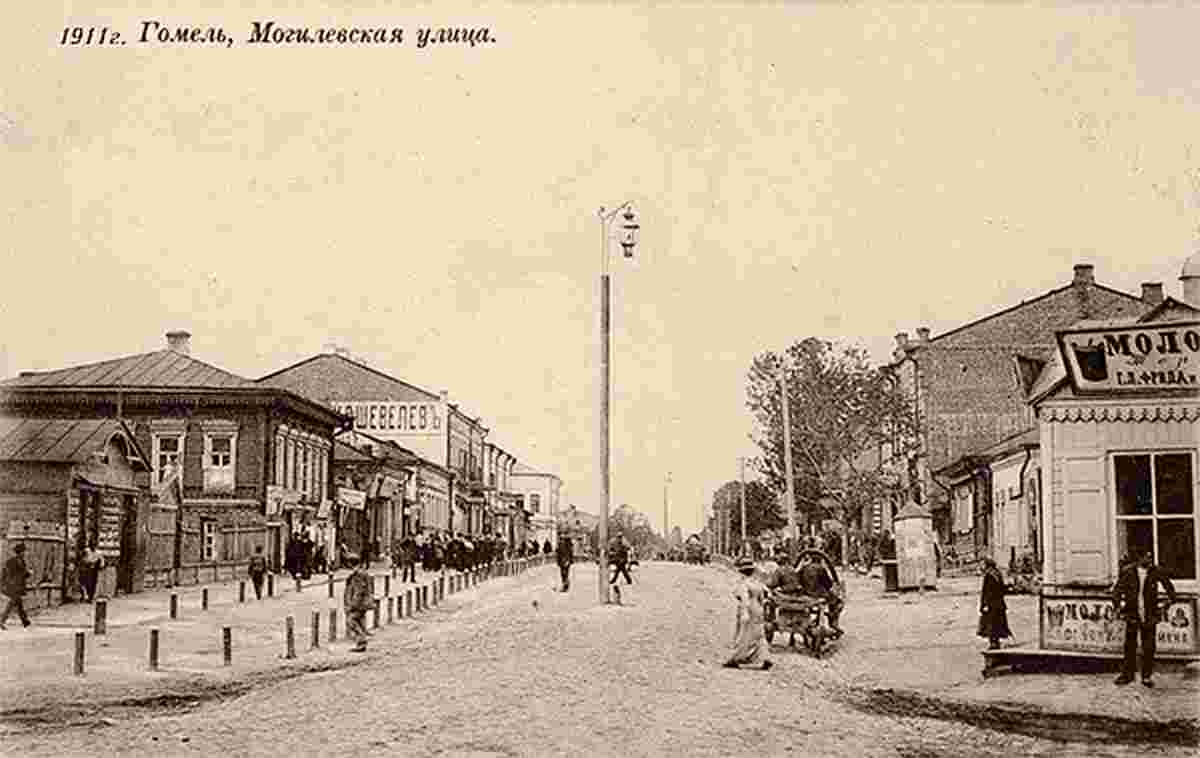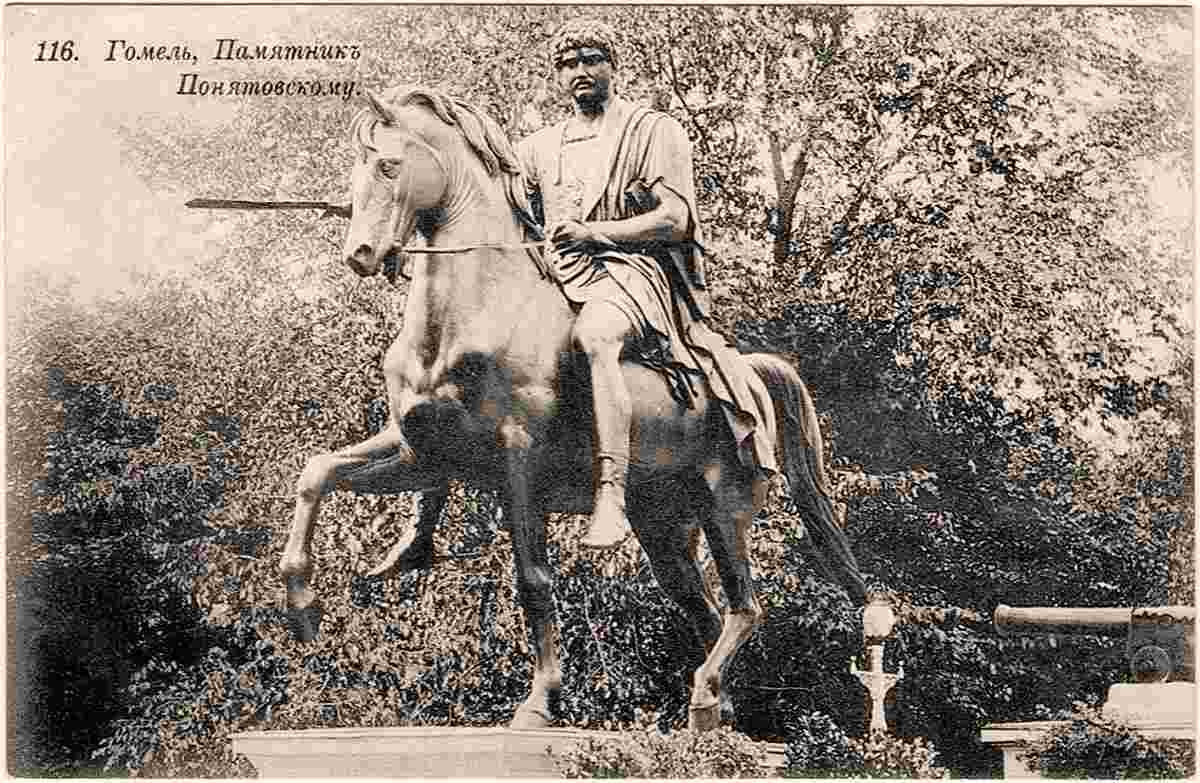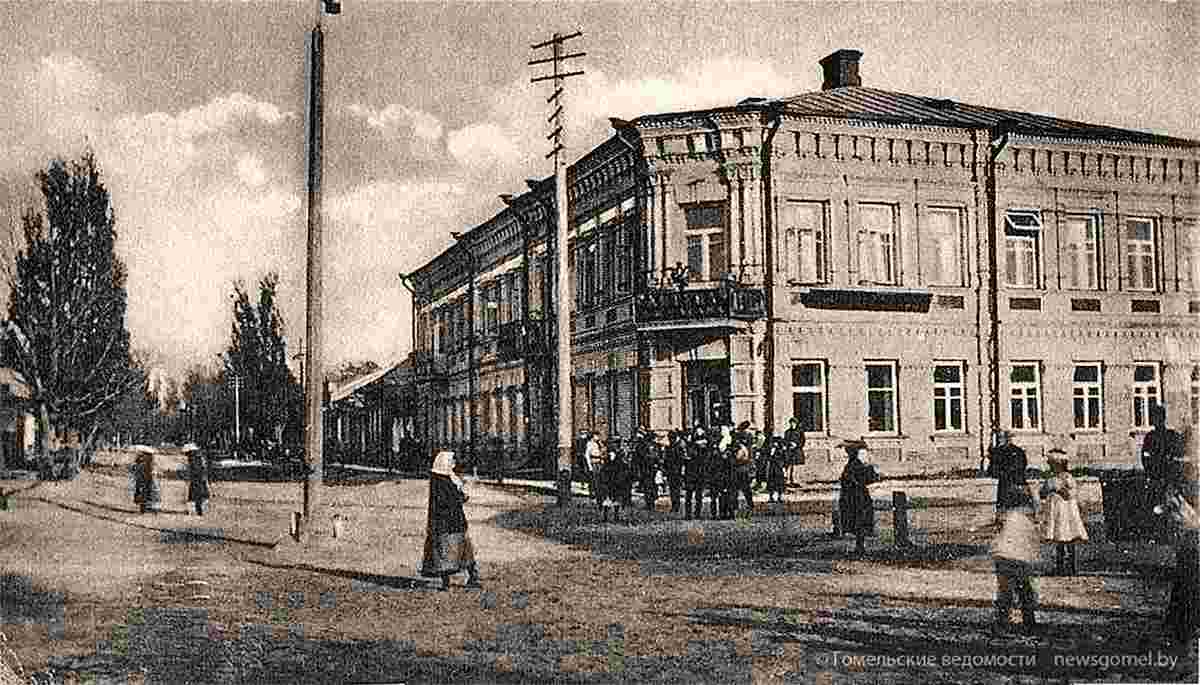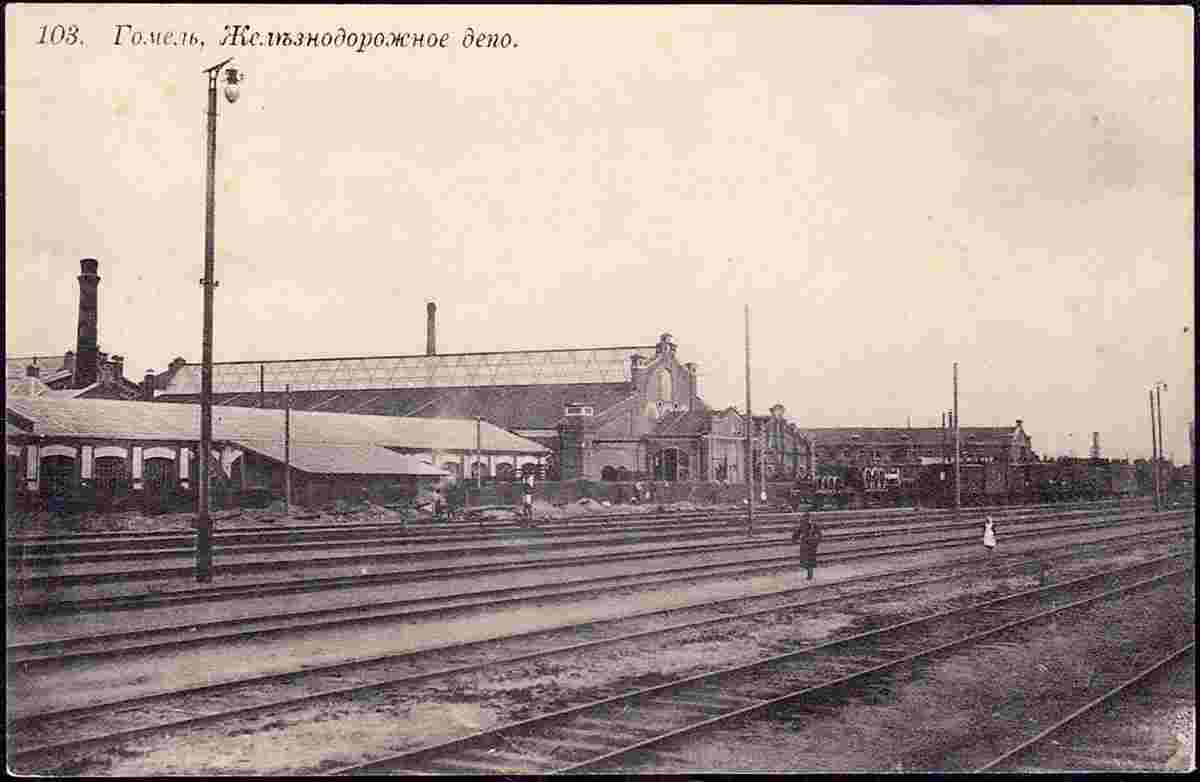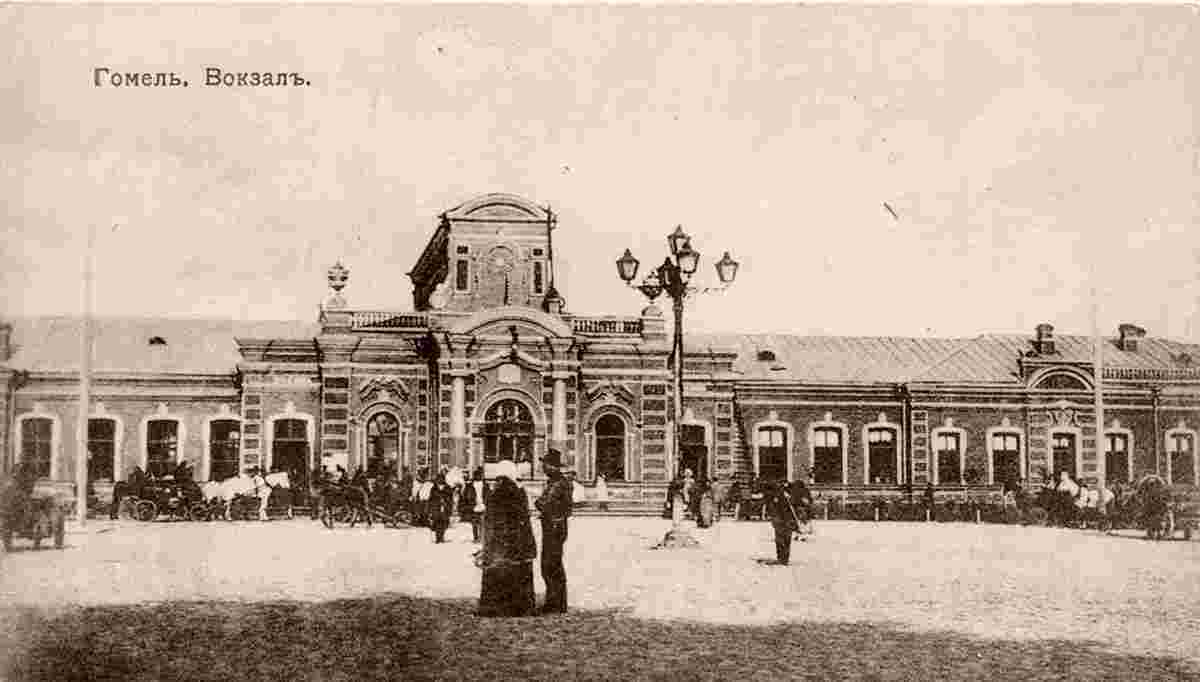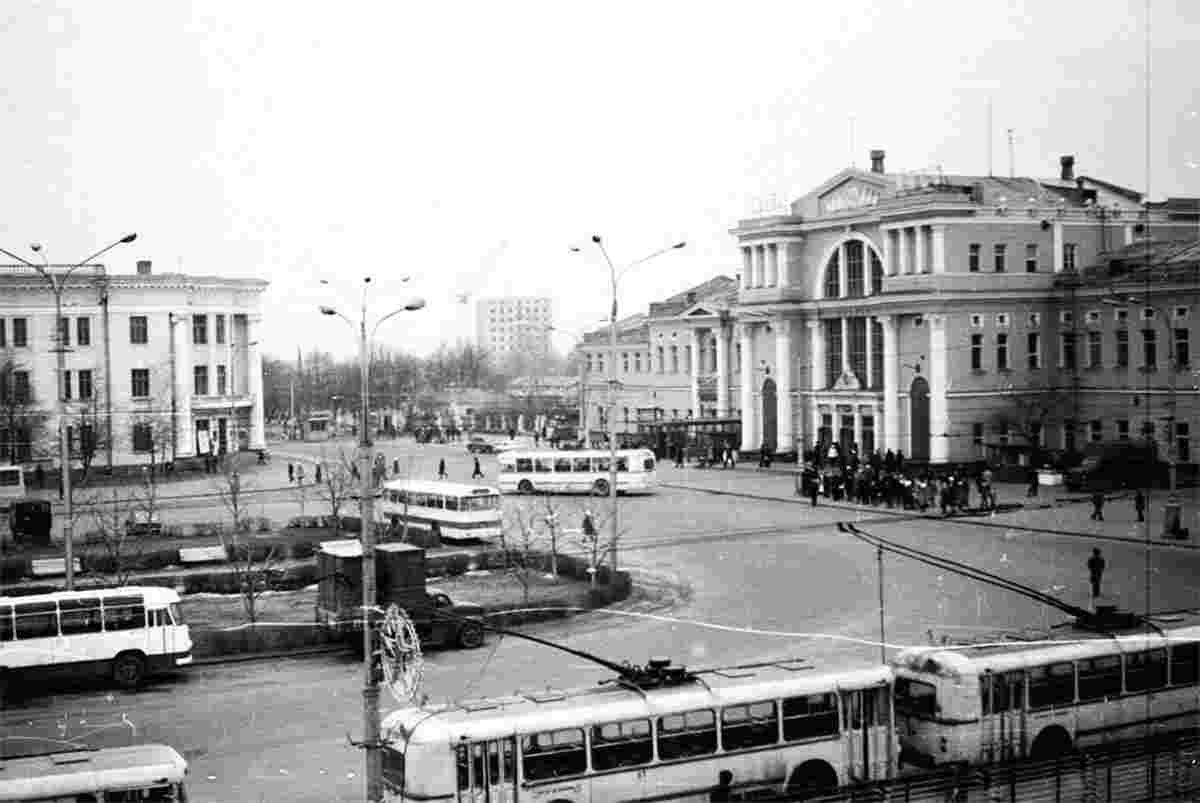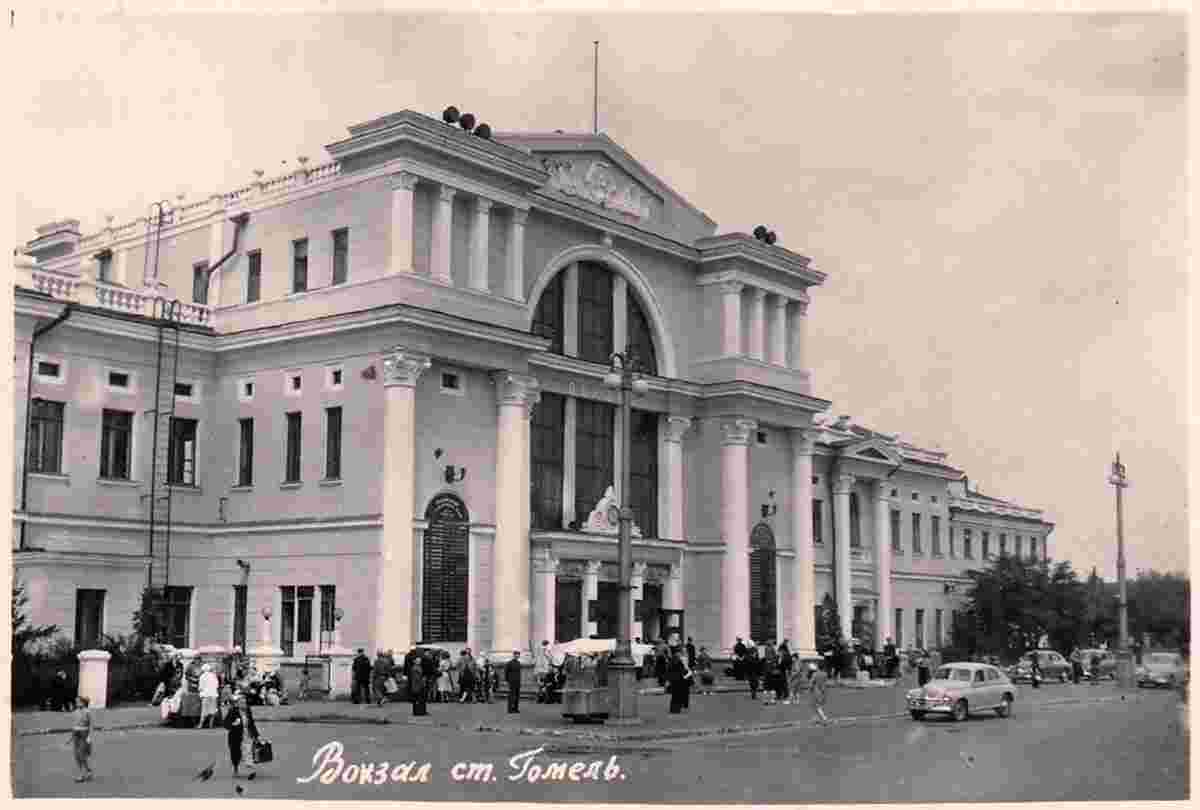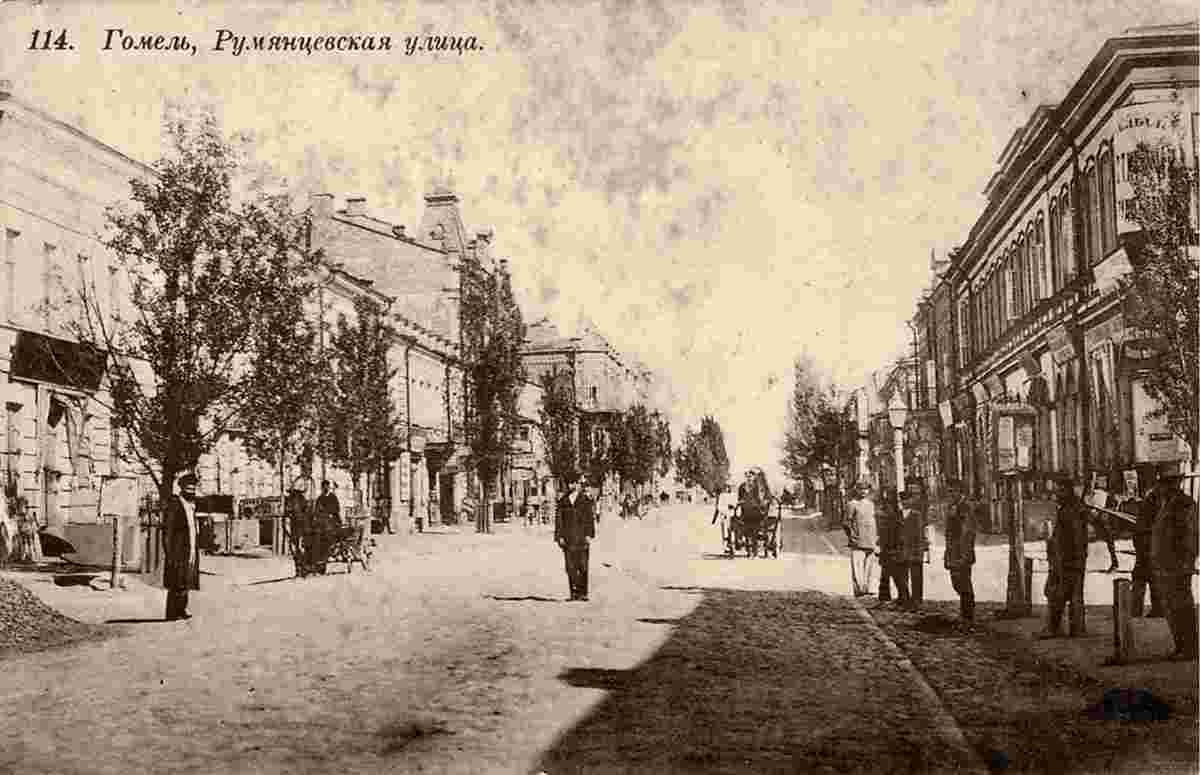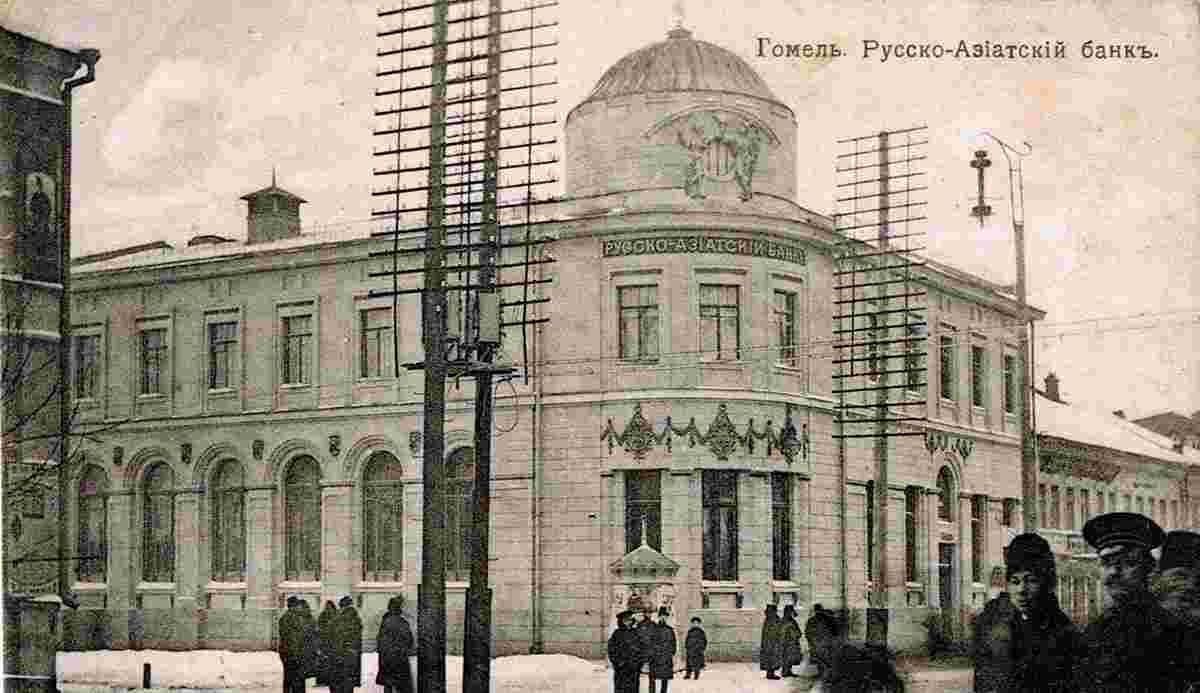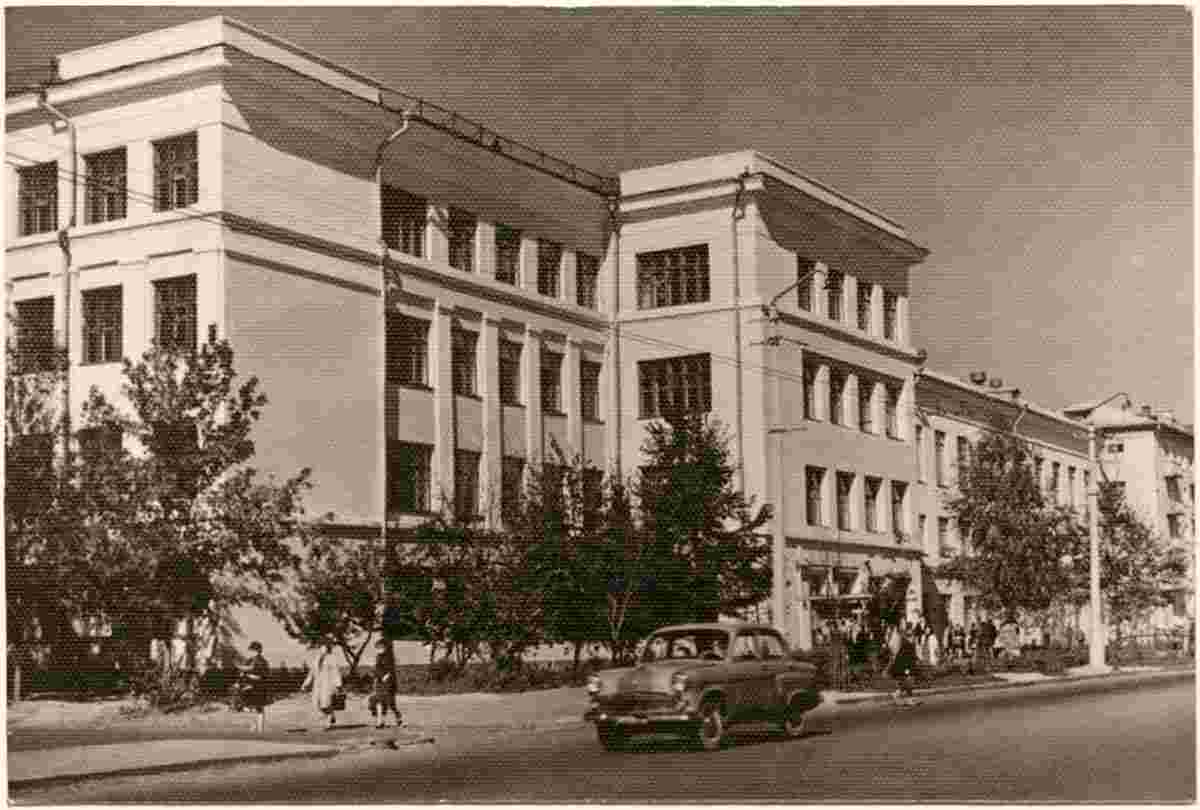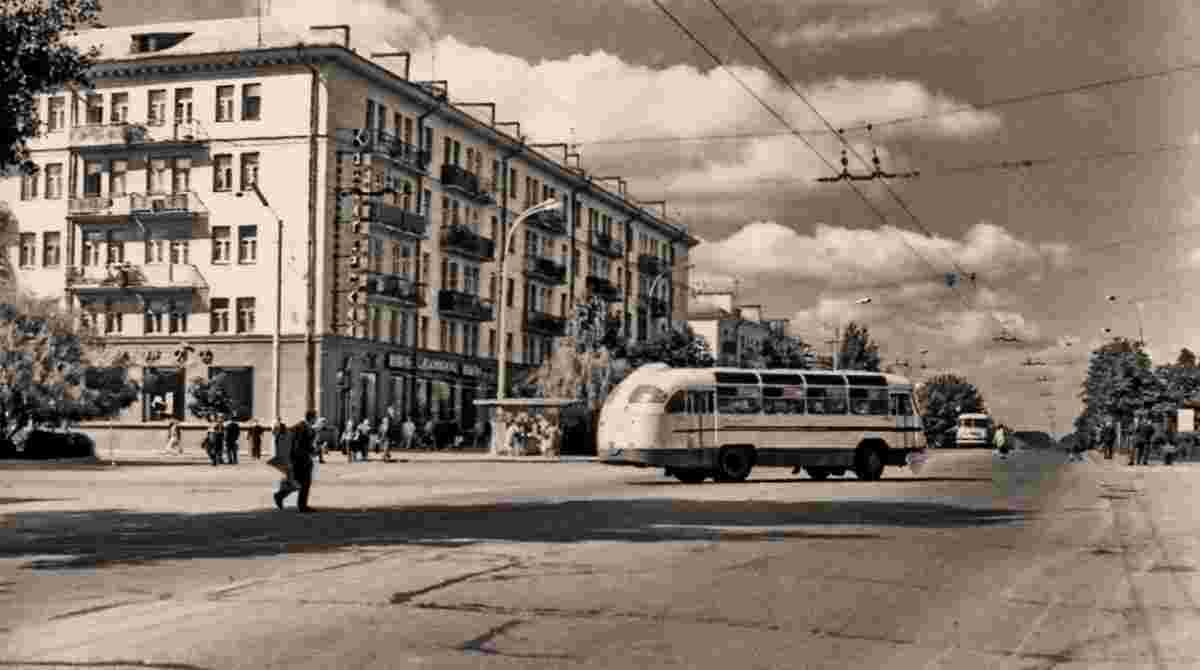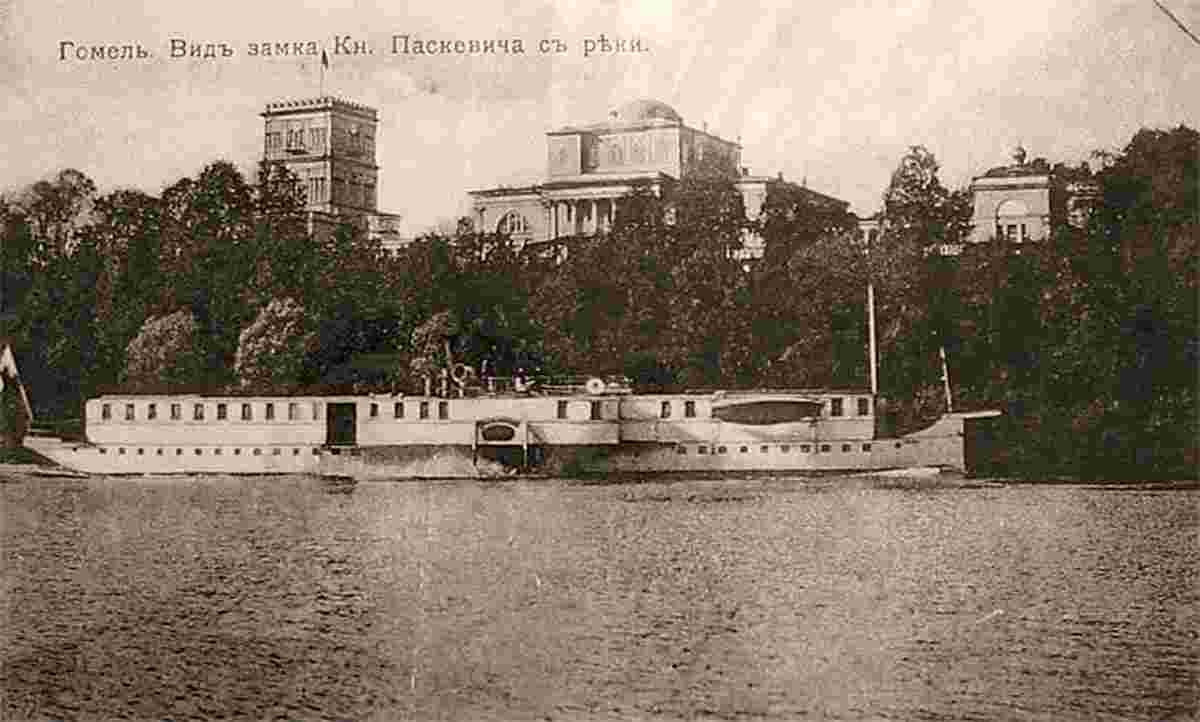History of Gomel in photos
HistoryOrigin of the nameThere are at least six narratives of the origin of the city’s Belarusian name. One of the more plausible is that the name is derived from the name of the stream Homeyuk, which flowed into the river Sozh near the foot of the hill where the first settlement was founded. Names of other Belarusian cities are formed along these lines: for example, the name Minsk is derived from the river Menka, Polatsk from the river Palata, and Vitsebsk from the river Vitsba. In historical sources from 1142 to the 16th century, the city is mentioned as Hom', Homye, Homiy, Homey, or Homyi. These forms are tentatively explained as derivatives of an unattested *gomŭ of uncertain meaning. The modern name for the city has been in use only since the 16th–17th centuries. During the Soviet period, another story about the city's name was popular: raftsmen on the river Sozh supposedly warned each other about the danger of running into sandy shallows by shouting «Ho! Ho! Mel!». A more recent narrative, propagated by some modern researchers, is that the name is derived from an ancient Belarusian greeting: «Dats u homel», which means «to pat on the shoulder». Gomel under Kievan Rus'Gomel was founded at the end of the 1st millennium AD on the lands of the Eastern Slavic tribal union of Radimichs. It lays on the banks of the Sozh river and the Homeyuk stream. Sozh's high right bank, cut through by canyons, provided a natural fortification. For some time, Gomel was the capital of the Gomel Principality, before it became part of the Principality of Chernigov. Gomel is first mentioned in the Hypatian Codex under the year of 1142 as being territory of the princes of Chernigov. For some time, Gomel was ruled by the prince of Smolensk Rostislav Mstislavich before it was re-captured by Iziaslav III Davidovich, after whose death it belonged to Sviatoslav Olgovich and then to Sviatoslav's son Oleg. Under Oleg, Gomel went to the Principality of Novhorod-Siverskyi. The next ruler was Igor Svyatoslavich – the hero of "The Tale of Igor's Campaign". During this period, the town was a fortified point and the centre of a volost. In the 12th–13th centuries the city's area was not less than 40 ha, and it had developed various crafts and was connected by trading routes with the cities of Northern and Southern Rus'. Archeological data have shown that the city was badly damaged during the Mongol-Tatar assault in the first half of the 13th century. Gomel in the Great Duchy of Lithuania and the Polish-Lithuanian CommonwealthIn 1335, the Gomel region was joined to the Great Duchy of Lithuania by Algirdas. From 1335 to 1406 it was under the ownership of prince Patricia Narymuntovich and his sons, from 1406 to 1419 the city was ruled by the Great Duke's deputies, from 1419 to 1435 it belonged to prince Svitrigaila, from 1446 to 1452 to prince Vasiliy Yaroslavich, from 1452 to 1483 to Mozhaysk prince Ivan Andreyevich, and from 1483 to 1505 to his son Semyon, who transferred it to the Grand Duchy of Moscow. During the Second Muscovite-Lithuanian War of 1500–1503 Lithuania tried to regain Gomel and other lands transferred to Moscow, but suffered defeat and lost one-third of its territory. In 1535, Lithuanian and Polish forces under Jerzy Radziwiłł, Jan Tarnowski and Andrzej Niemirowicz re-captured the city after the surrender of Moscow's deputy, D. Shchepin-Obolensky. In the same year, the Great Duke of Lithuania Sigismund Kęstutaitis founded the Gomel Starostwo. According to the peace agreement of 1537, Gomel together with its volost remained a Lithuanian possession. In 1535–1565 Gomel is the centre of starostwo, and from 1565 onwards Gomel is in the Rechytsa Powiat of the Minsk Voivodeship. In 1560, the city's first coat of arms was introduced. In 1569, Gomel became part of the Polish-Lithuanian Commonwealth. From this moment on, the city became the arena of numerous attacks and battles between Cossaks, Russia and the Polish-Lithuania Commonwealth. In 1572, Gomel Starostwo was given to B. Sapega. At the beginning of the 1570s, Gomel was captured by the forces of Ivan the Terrible, but in 1576 it was re-captured by J. Radziwiłł. In 1581, Gomel was again attacked by Russian troops, and in 1595–1596 it was in the hands of Severyn Nalyvaiko's Cossaks. After the beginning of the struggle against Orthodox Christianity in Lithuania, Orthodox Nikolayevskiy Cathedral was closed on the order of Greek Catholic Eparch Josaphat Kuntsevych in 1621. In 1633 the city was besieged by the Cossaks of Bulgakov and Yermolin, in 1648 captured by the Golovatskiy's Cossack detachment, and in 1649 by Martyn Nebaba's detachment. After that, Gomel got through several sieges in 1651 but in 1654 was captured by Ivan Zolotarenko's detachment. He and his sons held the city until 1667 and then began to serve under Alexis of Russia, however, after the Truce of Andrusovo Gomel at last returned to the Polish-Lithuanian Commonwealth, where it first belonged to M. K. Radziwiłł and then – till the annexation by the Russian Empire – to the Czartoryski family. During the Great Northern War Russian forces under Aleksandr Danilovich Menshikov stood in Gomel. In 1670, Gomel got the Magdeburg rights. Towards the middle of the 17th century, the city fell into crisis mainly due to the struggles mentioned above. It suffered significant damage, the population decreased severely, and many crafts disappeared. Gomel in the Russian EmpireThe period when Gomel was part of the Russian Empire was marked by rapid growth of the population, urban infrastructure, and industrial capacity. Gomel became part of the Russian Empire after the first partition of the Polish-Lithuanian Commonwealth in 1772 and was confiscated by the imperial treasury. In 1775, Empress Catherine II gave Gomel and Gomel eldership in the eternal hereditary possession of Russian military commander Pyotr Rumyantsev. The Peter and Paul Cathedral, designed by architect John Clark, was built in 1809–1819. Nikolay Rumyantsev opened the first high school, hotel courtyard, glass, tile, distilleries, weaving and spinning factories, and he built a church, a synagogue, a pharmacy, a hospice and a permanent wooden bridge across the Sozh river. After the death of Nikolay Rumyantsev, the city came in possession of his brother Sergei Petrovich Rumyantsev. However, due to lack of money, Sergei indebted Gomel with the state treasury of the Russian Empire. Subsequently, after not being able to pay off the debt, the treasury sold the city. Gomel Palace was acquired by Prince Ivan Paskevich, and the rest of the city by Nicholas I (1838). Paskevich had an English garden made around the palace, which is still in place today. In 1856, the estate passed on to his son Fyodor Ivanovich Paskevich. By 1913, Gomel was a major industrial city and counted 104,500 inhabitants. Ukrainian periodPreceding the treaty of Brest-Litovsk, on 1 March 1918 the city was liberated from Bolshevik troops (the Executive Committee of the Gomel Council of Workers' Deputies had left already on 21 February) by German forces. In March 1918 the city became part of Chernihiv Governorate of the Ukrainian State. After the overthrow of the Ukrainian State Gomel was administered by the Ukrainian People's Republic for 25 days. Soviet periodOn 14 January 1919, Gomel was occupied by the Red Army, leading to a major revolt. Insurgents took control of strategic objects and executed members of the Soviet leadership of the city. The rebels were defeated. In 1919, Gomel became the centre of the Gomel Governorate in the Russian Soviet Federative Socialist Republic. After the end of the hostilities, restoration of industry and transport began. In the 1920s, a number of large businesses had been created: shipyards, a factory named "Polespechat", a shoe factory named "Trud", a bakery, and the first phase of a municipal power plant. In 1926 the city was passed to the Belarusian SSR. By 1940, 264 industrial enterprises had been established World War IIDuring World War II, Gomel was under Nazi occupation from August 19, 1941 until November 26, 1943. The city was taken by Rokossovsky's Belorussian Front during the Gomel-Rechitsa Offensive. Eighty percent of the city was destroyed. The population of Gomel had dropped dramatically. According to the data of the registry, the population of Gomel numbered less than 15,000 inhabitants, compared to 144,000 inhabitants in 1940. The post-war periodAfter the war, restoration of Gomel began promptly. The majority of pre-revolutionary buildings were lost. City streets were considerably expanded, and buildings in Stalinist Empire style were erected. In 1950, almost all of the pre-war enterprises resumed their work. Chernobyl disasterAs a result of the catastrophe at the Chernobyl nuclear power plant on 26 April 1986, Gomel suffered radioactive contamination. This significantly worsened both the ecological situation and the socio-economic crisis that had struck the USSR in the late 1980s. It caused a sharp decline in living standards and a gradual depopulation that lasted until the early 21st century. At the beginning of the 21st century, a scientific centre and practice for radiation medicine and human ecology was built in Gomel to overcome and study the consequences of the catastrophe at Chernobyl. The development of radiological dose values varies between individual villages in severely contaminated regions, depending on the surroundings and the economic orientation. In general, life is possible in these areas today, even in some parts of formerly closed-off zones, if appropriate behavioural rules are observed. Establishment of the Republic of BelarusOn 27 July 1990, the Declaration of State Sovereignty of the Belarusian Soviet Socialist Republic was drafted. Gomel became a city in the independent state of the Republic of Belarus. In the first half of the 1990s, Gomel, like the whole of Belarus, was struck by an acute socio-economic crisis: living standards fell sharply, the death rate exceeded the birth rate, the volume of industrial production fell sharply, and the crime rate increased. From 1996 onwards the situation in the country and in Gomel began to stabilize and improve gradually. PopulationIn 2013, the city's population numbered 515,325, indicating a positive population growth and hence a reversal of the demographic crisis that began in 1993. Jewish communityAfter the annexation of Gomel by the Russian Empire and the creation of the Pale of Settlement, Gomel gradually became a centre of resettlement for the Jewish population of Russia. According to the 1897 census, 55% of the population of Gomel were Jews. In 1903, there was a violent pogrom against the Jewish population of the city. From that moment on, a gradual decrease of the number of Jews in the city began. 40,880 Jews lived in Gomel in 1939, when they comprised 29.4 percent of the total population. Most Jews had left the city in anticipation of German occupation, but still between 3,000-4,000 Gomel Jews fell victim to the Holocaust. The end of the 1980s and beginning of the 1990s saw mass emigration of Jews from Gomel, but at the same time restoration of Jewish institutions in the city by the remaining Jewish inhabitants. Origin: en.wikipedia.org | |||||||||||||||||||||
 |
Old historical photos and pictures of Gomel (Homiel), Belarus
Старыя гістарычныя фота і здымкі Гомель, Беларусь |
| Cities of the World • Countries of Europa • Cities of Belarus |
| Robinson Rd, CB 13862 Nassau, NP, The Bahamas |

